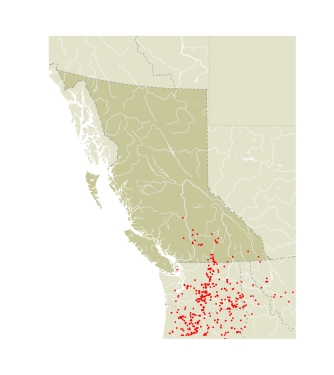Hesperia refers to the Hesperides, the nymphs who guarded the apples of Hera (Emmet 1991). The genus originally included all the skippers and lycaenids but was later restricted to the skippers and now to just this small number of species.
The genus Hesperia contains 1 Palearctic species, 1 Holarctic species, and 17 Nearctic species. The definitive revision is by MacNeill (1964). The species can often be determined only by dissection of the male genitalia. Three species are known for BC. An additional species, Hesperia uncas W.H. Edwards, 1863, may eventually be found in BC.
The genus Hesperia and the genera Polites and Ochlodes are very similar in general appearance. Hesperia males can be distinguished by the black stigma on the dorsal forewing: in Hesperia it is one long black line, whereas in Polites and Ochlodes it is two separate black areas that are narrowly separated from each other. In the field these three closely related genera can often be separated by their flight period and the habitat where they are found. Polites flies generally in June and occupies moist grassy areas, except for P. sabuleti, which is bivoltine in May and late July/early August and is found only in mesic meadows and lawns in the Okanagan. Hesperia is found in dry mesic to xeric areas, the males establishing territories on the tops of ridges. The only species that occurs in June is found in the Okanagan, usually on xeric ridgetops. The other two species fly in spring or after early July. Hesperia larvae appear to be associated with bunchgrasses. Ochlodes flies from late July to mid-September, and the one species is very common. It is not associated with bunchgrasses.
|
|

